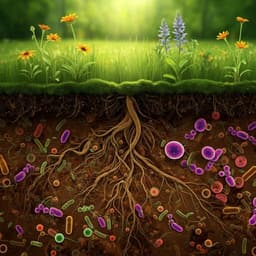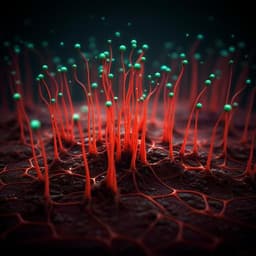
Agriculture
Contrasting response of soil microbiomes to long-term fertilization in various highland cropping systems
W. Kong, L. Qiu, et al.
This fascinating study by Weibo Kong, Liping Qiu, Satoshi Ishii, Xiaoxu Jia, Fuyuan Su, Yu Song, Mingde Hao, Mingan Shao, and Xiaorong Wei delves into how 36 years of fertilization with phosphorus, nitrogen, and manure reshapes soil bacterial communities and impacts crop productivity across various highland cropping systems in China. Discover the surprising interactions between fertilization and soil health that could revolutionize agricultural practices!
~3 min • Beginner • English
Related Publications
Explore these studies to deepen your understanding of the subject.







